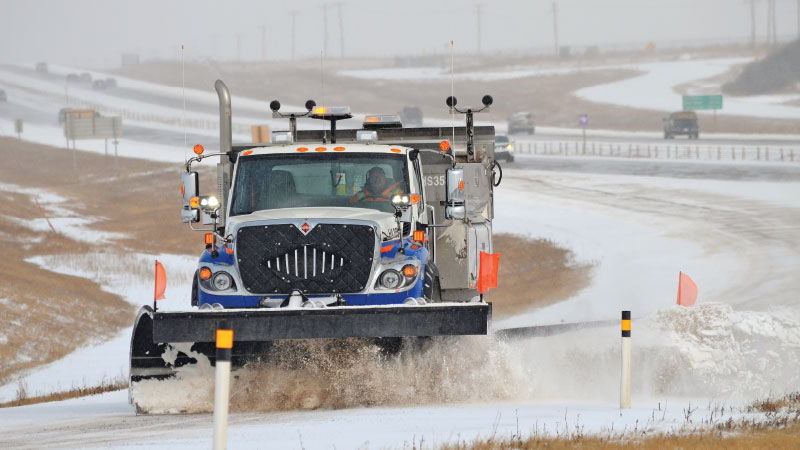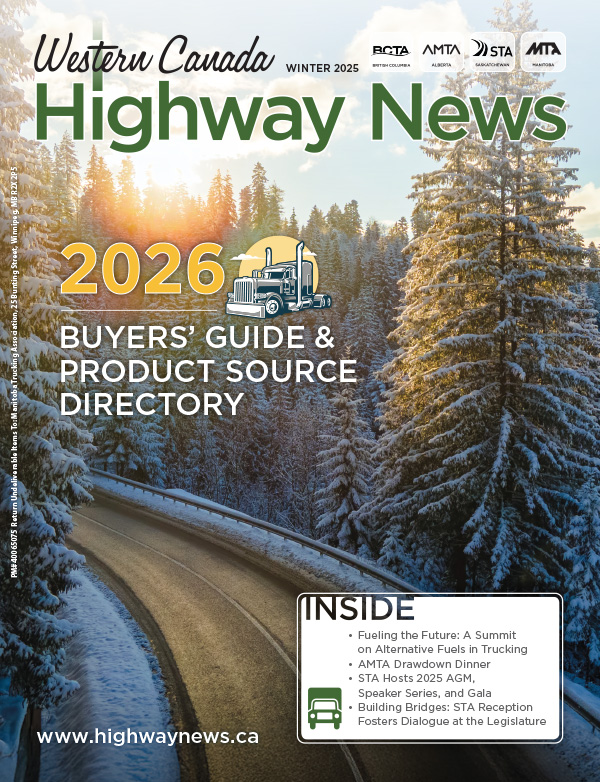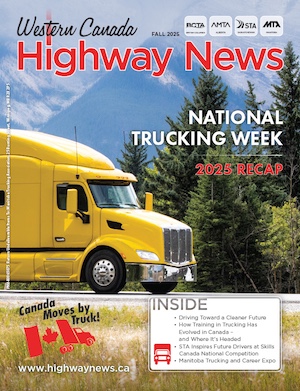By Kelsey Hipkin, Staff Writer, AMTA
We are all familiar with seeing snowplows on Alberta roads. Most of us are familiar with the adage “amber and red, snowplow ahead” and behind that are contractors and drivers on the road – sometimes 24/7 – ensuring driving conditions are as safe as possible.
Snowplow season is generally from October 1 through mid-April, though Warren Stasiuk, Manager of Safety with Volker Stevin Highways Ltd., says there are instances when plows will operate out of season (for example, Kananaskis experienced snowfall this August).
In this article, Warren shares the different types of plows motorists can expect to see out on Alberta roadways.
Front mount plows: “Will actually have wings on the side so they could be on the right or they could be on the left-hand side” (some contractors will have plows with a wing on each side).
Tow plows: “Those are generally on the P3s only, like your ring roads and stuff like that, so what they’ll have is a plow in the front and then they’ll be pulling a trailer that swings out and becomes a 30-foot plow and it tracks sideways.”
Graders: “We’ll use for when the snow gets quite heavy on the shoulders, so we have to make room to place [it]. … They’ll wing the snow off, generally five feet further … so they can push more snow off the edge of the road.”
A Day in the Life
A day in the life of a snowplow driver is more than getting behind the wheel. Frederick Chabot-Beaurivage, Ledcor’s Project Manager at Contract Maintenance Area 504 (Alberta, Grande Prairie district), shares details around a typical snowplow driver shift:
“A typical shift starts upon arrival to the highway maintenance shop with reviewing a Toolbox Talk/Safety Meeting topic and assessing the hazards and controls of the work at hand. The operator then completes a thorough pre-trip inspection of the unit and heads off to the sand/salt shed to load the truck,” says Frederick.
“Once on the road, the operator frequently stops to let traffic pass, complete walk arounds of the unit, and ensure lights are clean and that they are visible, and reports back the road conditions to their supervisors. They may return to the shop to reload sand/salt mixtures between each beat as needed throughout the shift. At the end, the operator returns to the shop, completes a thorough post-trip inspection of the unit, checks in with their supervisors and submits a snow and ice sheet and timesheet for the hours worked.”
Safety on the RoadsAs with all commercial vehicles, operator and motorist safety is an important factor. According to statistics from the Highway Maintenance Safety Committee, there were 14 rear-end,
11 side-swipe and five left-hand wing plow incidents in Alberta between 2020 and 2021. Adding to weather conditions, speed and snow clouds can be a factor in driver and motorist safety when it comes to plows.
Warren explains that blowing snow from weather conditions can create a cloud that limits visibility. A snow cloud created by an operating snowplow is similar to one created by a commercial truck, so motorists need to ensure they’re being cautious no matter the conditions when approaching a snow cloud.
“Even on a regular clear day a snow cloud can linger. Just stay back, you see the cloud, stay back and avoid getting up in there,” he says while adding there are lighting initiatives underway to try and improve the safety of snowplow drivers.
When it comes to snowplow speeds, Stasiuk explains there is a range depending on what a snowplow driver is operating.
“For the gist of it we do 70 [km/h] with the front plow and then we do 60 [km/h] while plowing with a wing – that’s a maximum of what we allow to do.” Snowplow Safety and You
AMTA Road Knight David Horst has been with highway maintenance for 18 years. Currently driving with Ledcor Alberta Ltd., he shares some snowplow safety tips for the motoring public.
“Some things for the public to know are, please be patient and give us the time to get the roads back to a safe condition,” says David. “Also, we cannot turn off our sanders on hills or corners and if conditions require sanding. There will be debris from the truck tires even if unit is turned down.”
When it comes to sanding, Stasiuk said the best pattern is to get the sand to the centre line to start melting at the crown of the road, and while operators do the best they can to avoid it, plow contractors can receive complaints about sanding.
“When we meet traffic we either slow down the [sand] spinner or shut it down [but] sometimes you may not be able to judge it quickly enough.” Frederick explains plow trucks will stop in safe locations every few kilometers to let traffic pass.
“There are also other serious risks of passing plow trucks than road conditions, such as visibility issues caused by the plume, damage to the vehicle from material coming off the plow or sander or making contact with the wing or front plow which extend further than the truck itself,” says Frederick – encouraging drivers to keep a safe distance and wait for a plow to pull over before passing.
“Our operators are people, too. This means that in whiteout conditions, snow-blindness or extreme fatigue, we encourage our operators to pull over. Please be patient with our teams as we want everyone to get home safely. Drive to road conditions and check 511 during winter events prior to getting on the road,” says Frederick.
Dale Howard, AMTA Business Development, has held a Class 1 license for more than 40 years and his impressive resume includes two seasons as a snowplow operator with Volker Stevin.
“Plows are big, and wide and drivers are trying their best to make highway conditions better for the motoring public,” says Dale. “Please give operators room to work.”
For the most up-to-date information on Alberta roadways, please visit 511 Alberta: www.511.alberta.ca.


 1-866-985-9791
1-866-985-9791



